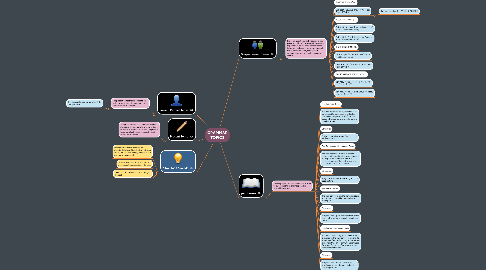
1. Simple present Tense
1.1. Indicates an action which happens in the present, but it isn’t necessary for actions to happen right now. Simple present tense indicates, unchanging situations, general truths, scientific facts, habits, fixed arrangements and frequently occuring events.
1.1.1. POSITIVE FORMS (+) :
1.1.2. Subject ( I, You, We, They ) + V1 ( First Form of Verb )
1.1.2.1. Subject ( He, She, It ) + VERB – S / ES / IES
1.1.3. NEGATIVE FORMS (-) :
1.1.4. Subject ( I, You, We, They ) + do not / don’t + V1 ( First Form of Verb )
1.1.5. Subject ( He, She, It ) + does not / doesn’t + V1 ( First Form of Verb )
1.1.6. QUESTION FORMS (?) :
1.1.7. Do + Subject ( I, You, We, They ) + V1 ( First Form of Verb )
1.1.8. Does + Subject ( He, She, It ) + V1 ( First Form of Verb )
1.1.9. SHORT ANSWER FORMS ( + / – ) :
1.1.10. YES / NO + Subject ( I, You, We, They )+ do / do not (don’t)
1.1.11. YES / NO + Subject ( He, She, It ) + does / does not (doesn’t)
2. past tenses
2.1. The simple past is a verb tense that is used to talk about things that happened or existed before now.
2.1.1. Past Indefinite Tense
2.1.2. The past indefinite tense, also known as simple past tense, is used to indicate a finished or completed action/task that occurred/happened at a specific point in time in the past.
2.1.3. Structure:
2.1.4. Subject + verb in the past form + . . . . . + adverb of time + . . .
2.1.5. Past Progressive (Continuous) Tense
2.1.6. The past progressive tense is used to demonstrate an action that was happening in the past for a period of time in a particular context. The context can be a specific time or another action.
2.1.7. Structures:
2.1.8. Subject + was/were + verb + ing + . . . . . a specific time
2.1.9. Past Perfect Tense
2.1.10. The past perfect is used to demonstrate an action that occurred before another action in the past.
2.1.11. Structures:
2.1.12. Subject + had + past participle form of the main verb + before + subject + simple past tense . . . .
2.1.13. Past Perfect Progressive Tense
2.1.14. The past perfect progressive tense is an extension to the past perfect tense and its structures. Past perfect progressive is used to demonstrate an action which continued for a specific period of time but stopped before another action.
2.1.15. Structure:
2.1.16. Subject + had + been + verb+ing + . . . . . + for/since + . . . . .+ before + subject + past simple tense
3. Present Perfect Tense
3.1. The present perfect tense refers to an action or state that either occurred at an indefinite time in the past.
3.1.1. This tense is formed by have/has + the past participle.
